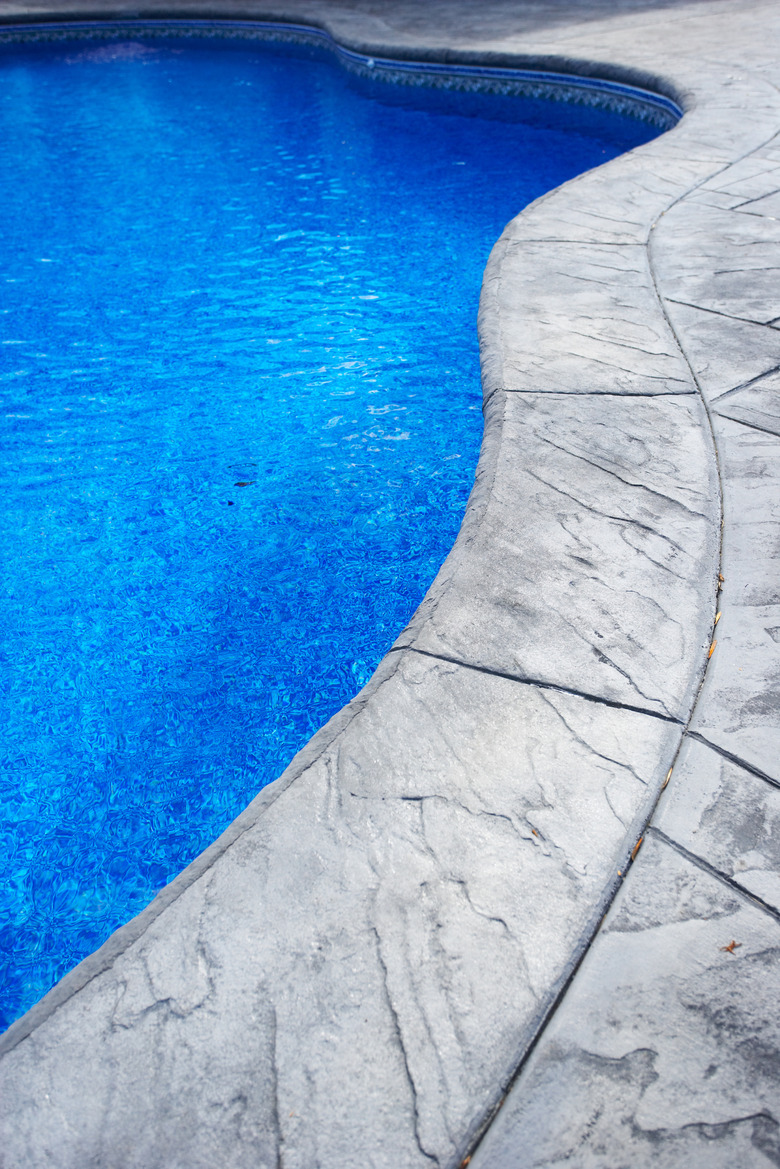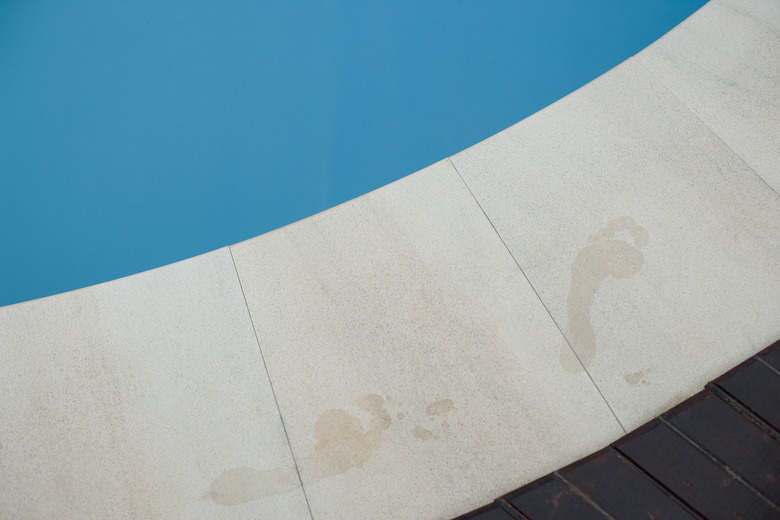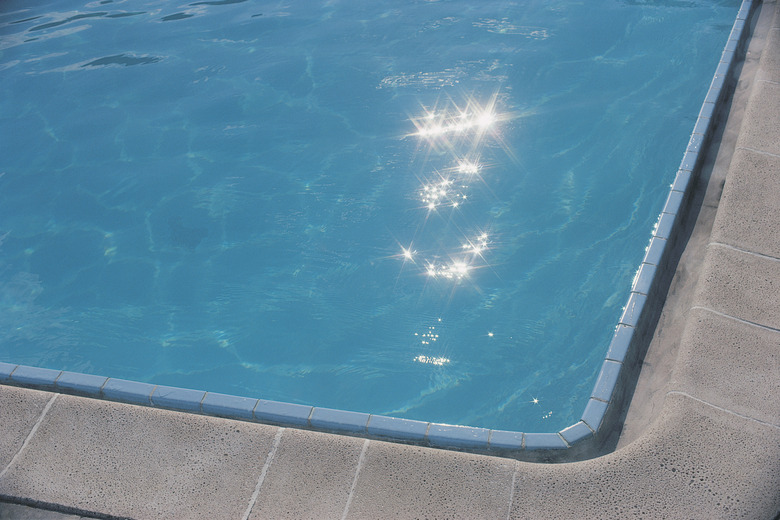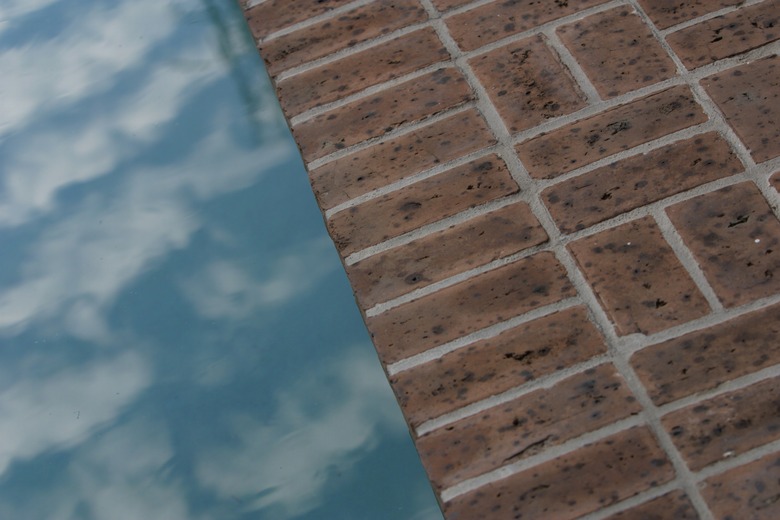Swimming Pool Edge Types
Step 1
Poured concrete pool edging is part of the greater pool deck area. The construction process goes like this: Contractors first build concrete forms that shape and mold in a variety of styles (typically angled with a round, bullnosed, cantilevered or rolled edge). Then, workers pour concrete into the forms as they work on the concrete pool deck area. They then remove the wooden forms and perform any final touches. The benefit of this kind of edging is significant: A one-unit concrete deck coping system creates the illusion of a larger deck area.
Stone
Step 1
Natural stone is also a type of pool edging. Flagstone — a rough-cut, jagged form of natural stone — features jigsaw-puzzle-like patterns. Flagstone edges are square, smooth or radial. Travertine natural stone (a type of limestone) coping is precut. Travertine edging typically has a soft, non-slip texture. Other types of natural stone edging include slate (bullnosed or flat-edged), square- or slightly eased-edge quartzite (favorable due to its superior non-slip qualities) and sandstone (flat or bullnose-edged).
Step 2
- Poured concrete pool edging is part of the greater pool deck area.
- The benefit of this kind of edging is significant: A one-unit concrete deck coping system creates the illusion of a larger deck area.
Precast Concrete
Step 1
Because it requires less manual labor than other coping types, precast concrete is easier on your wallet. Edging styles range from bullnose to rolled edge, and pieces are cantilevered (angled away from the pool) or flat. They are precut and manufactured offsite and custom-made to fit the contours of your swimming pool. Precast coping matches the interior colors of the pool or contrasts and highlights the colors of the greater pool deck area. Precast is also a standalone design detail (for example, gray precast concrete edging juxtaposed against a red brick pool deck and light-blue aggregate pool shell colors).
Masonry
Step 1
Masonry (brick pavers) are also a pool edge type. They may be a design detail (for example, brick edging that contrasts a concrete deck) or simply bullnose brick pieces fitting into a masonry pool deck. Colors range from bright red to burgundy, brown and gray. Brick coping has a soft, round bullnose edge.
Step 2
- Because it requires less manual labor than other coping types, precast concrete is easier on your wallet.
- Edging styles range from bullnose to rolled edge, and pieces are cantilevered (angled away from the pool) or flat.



